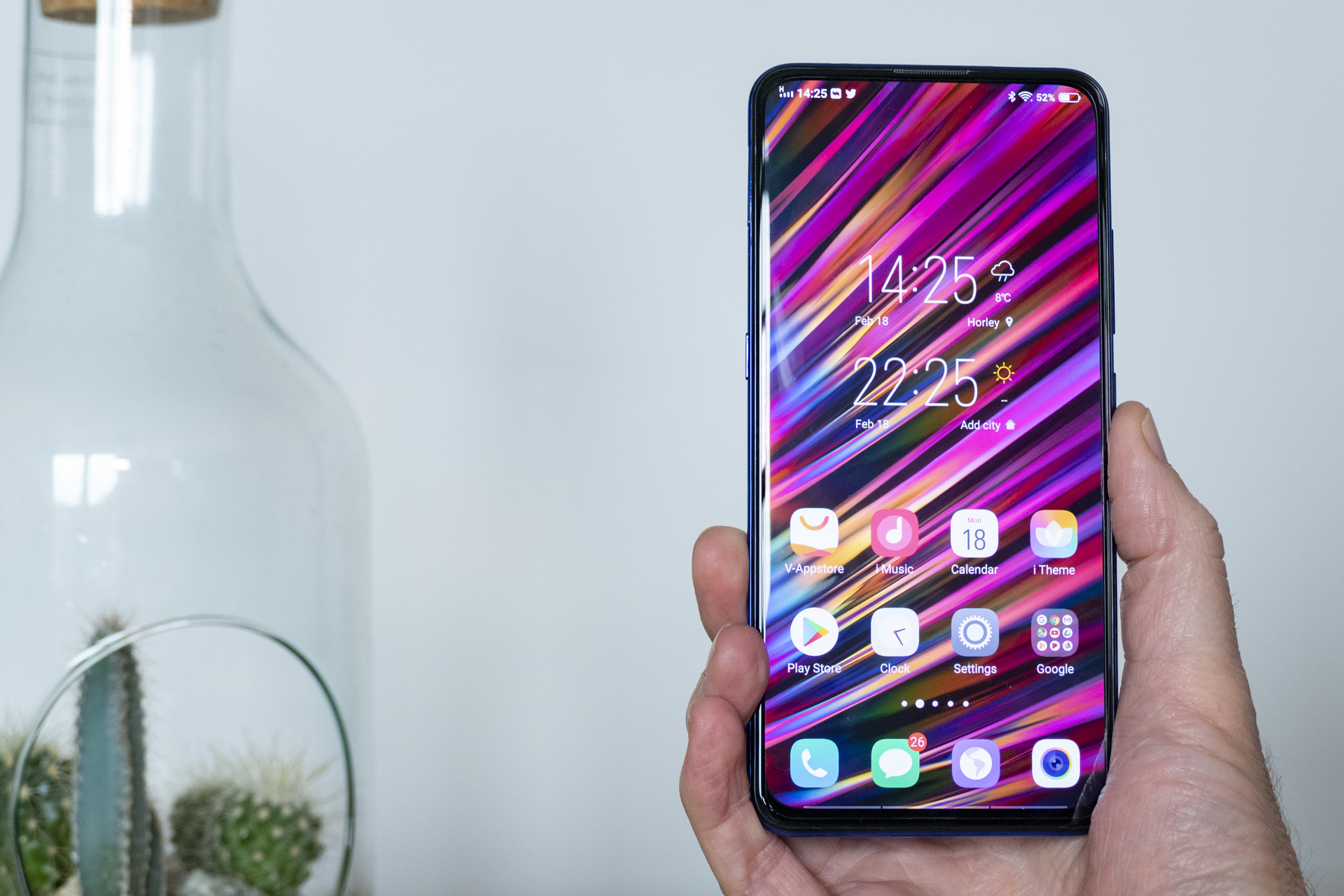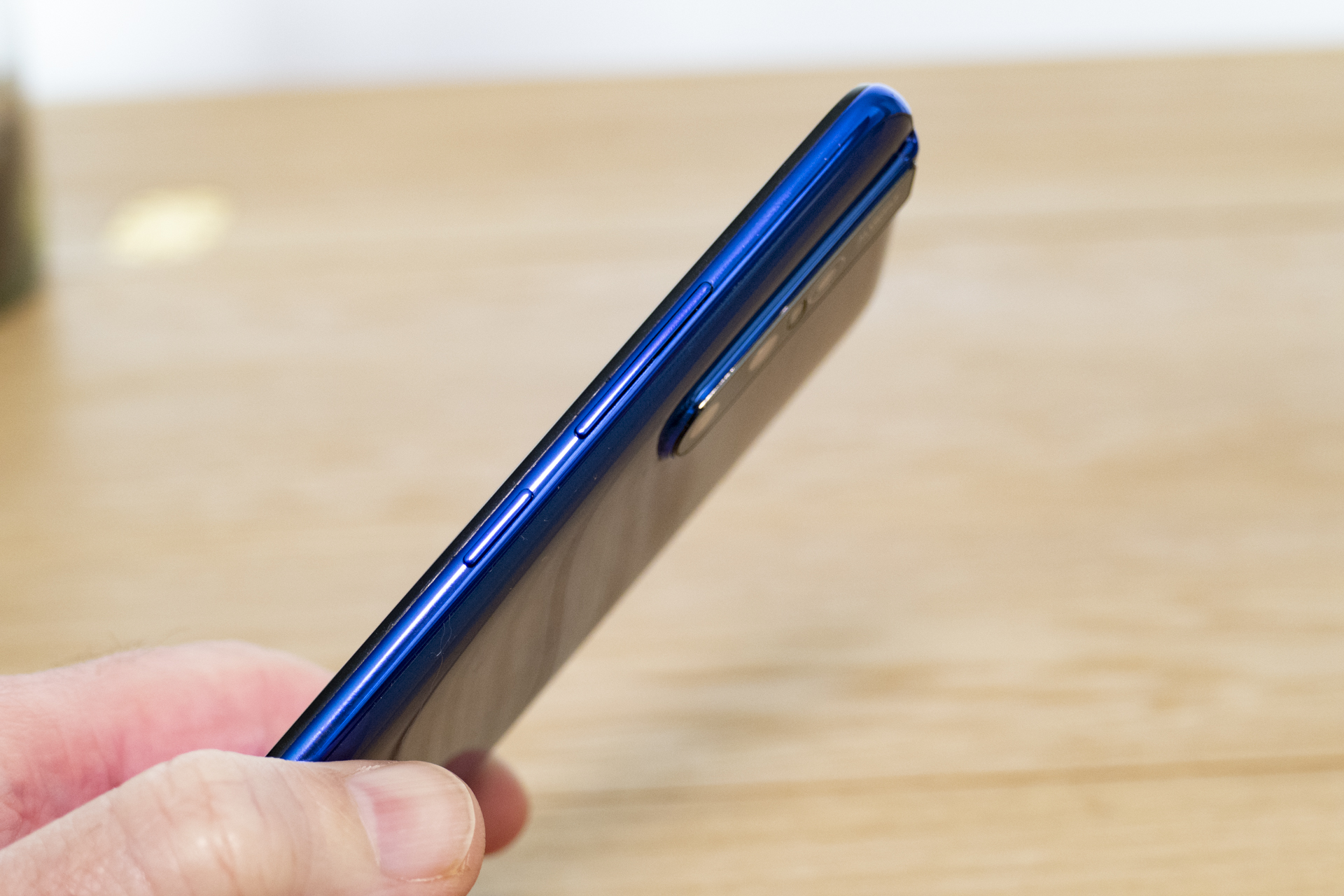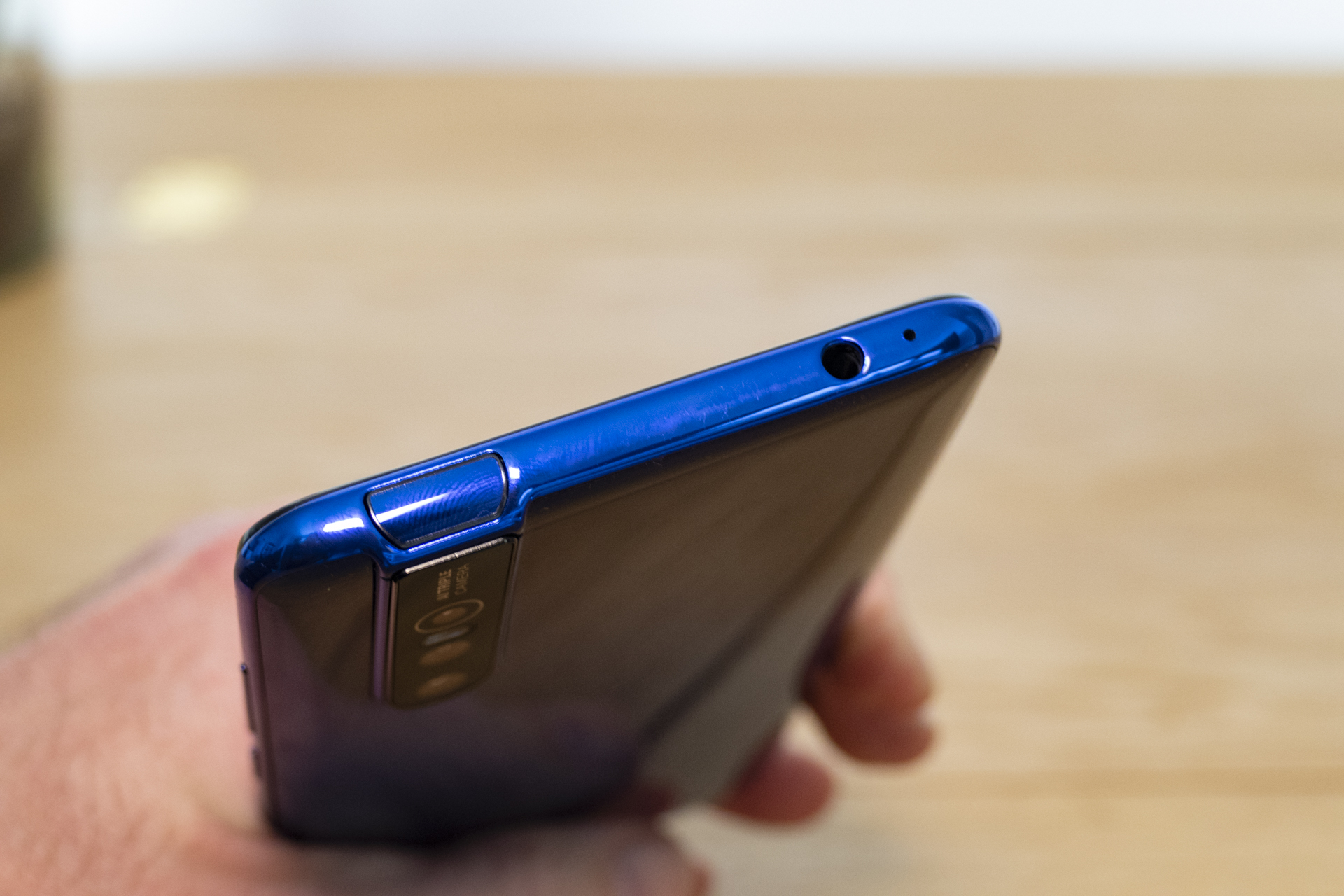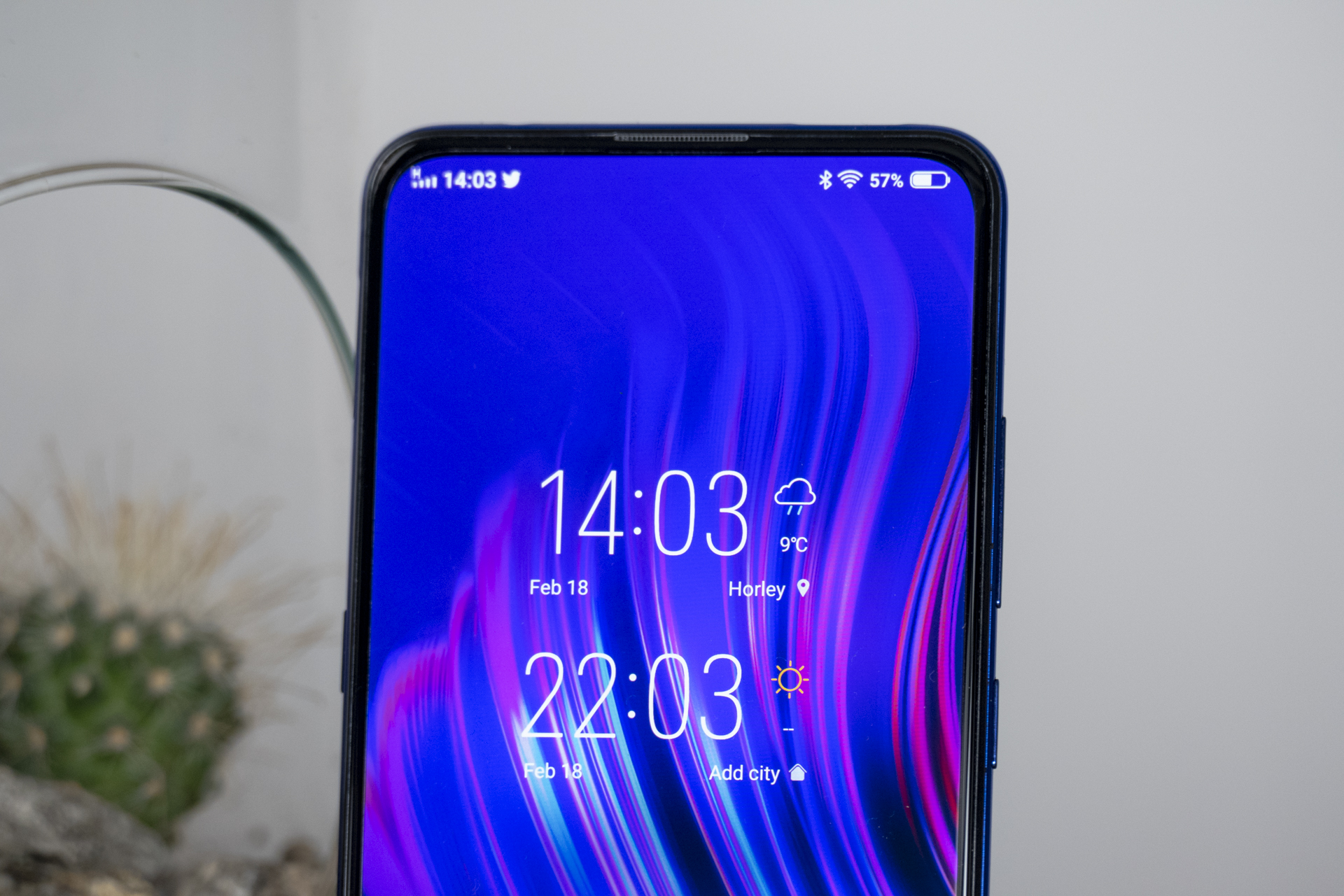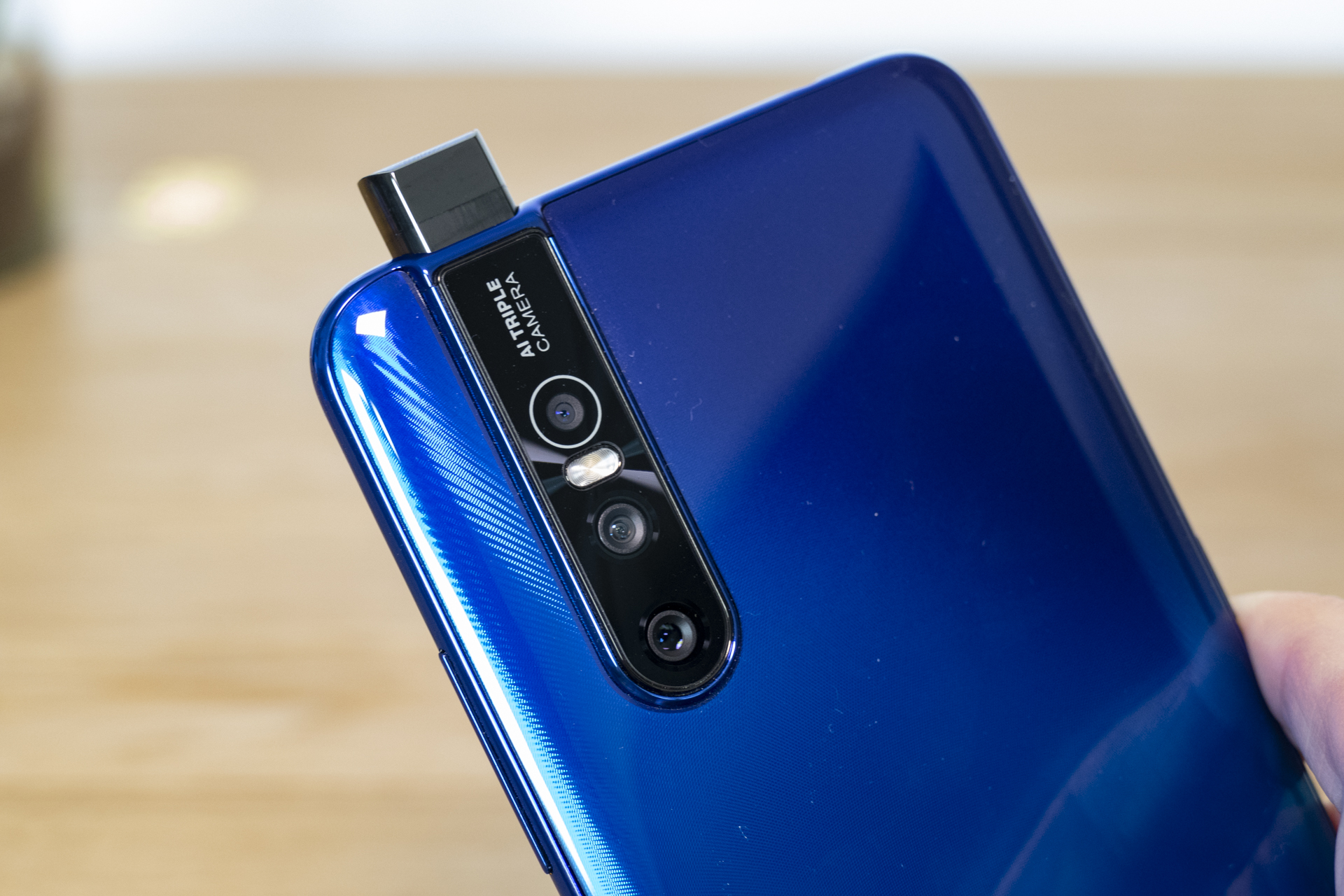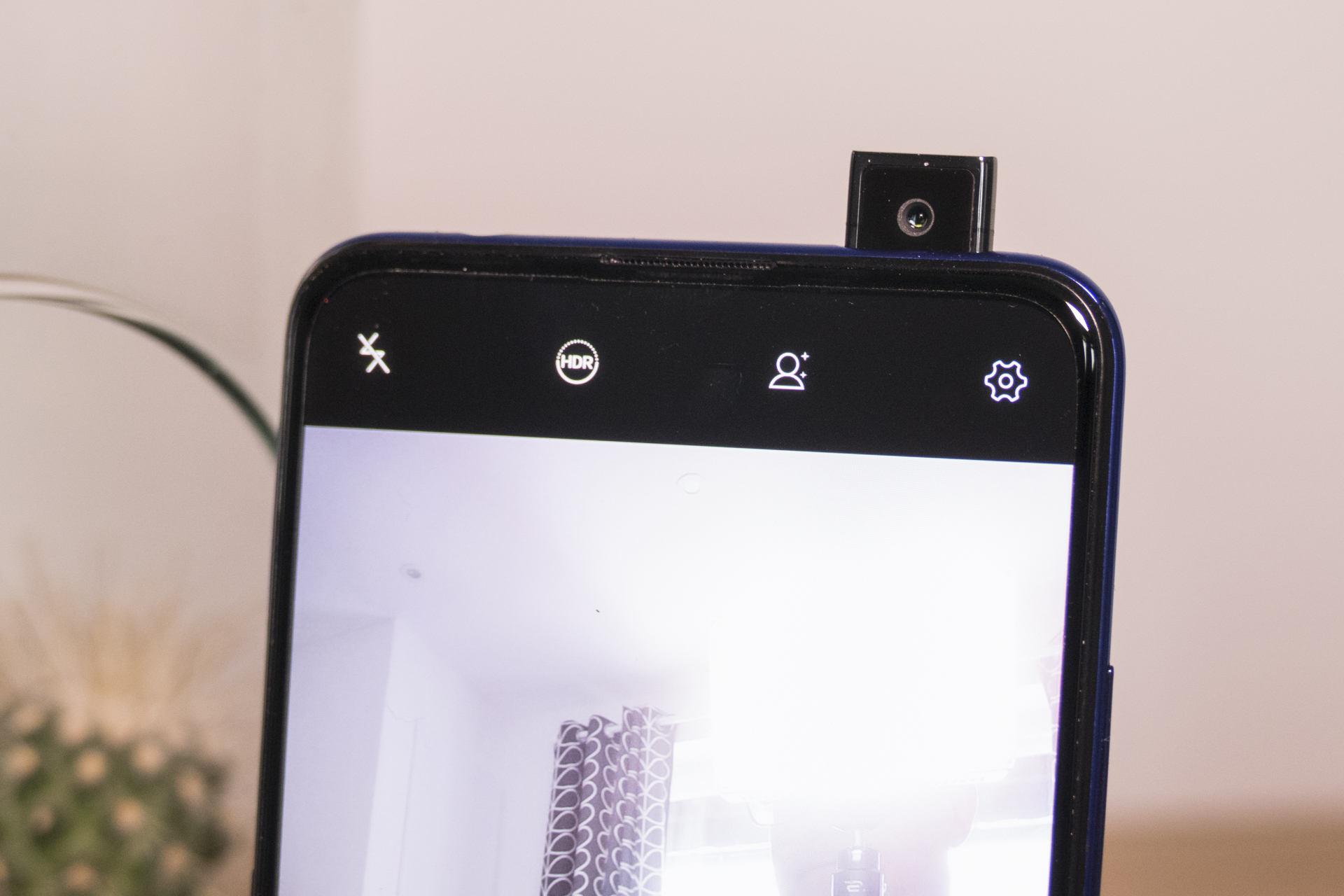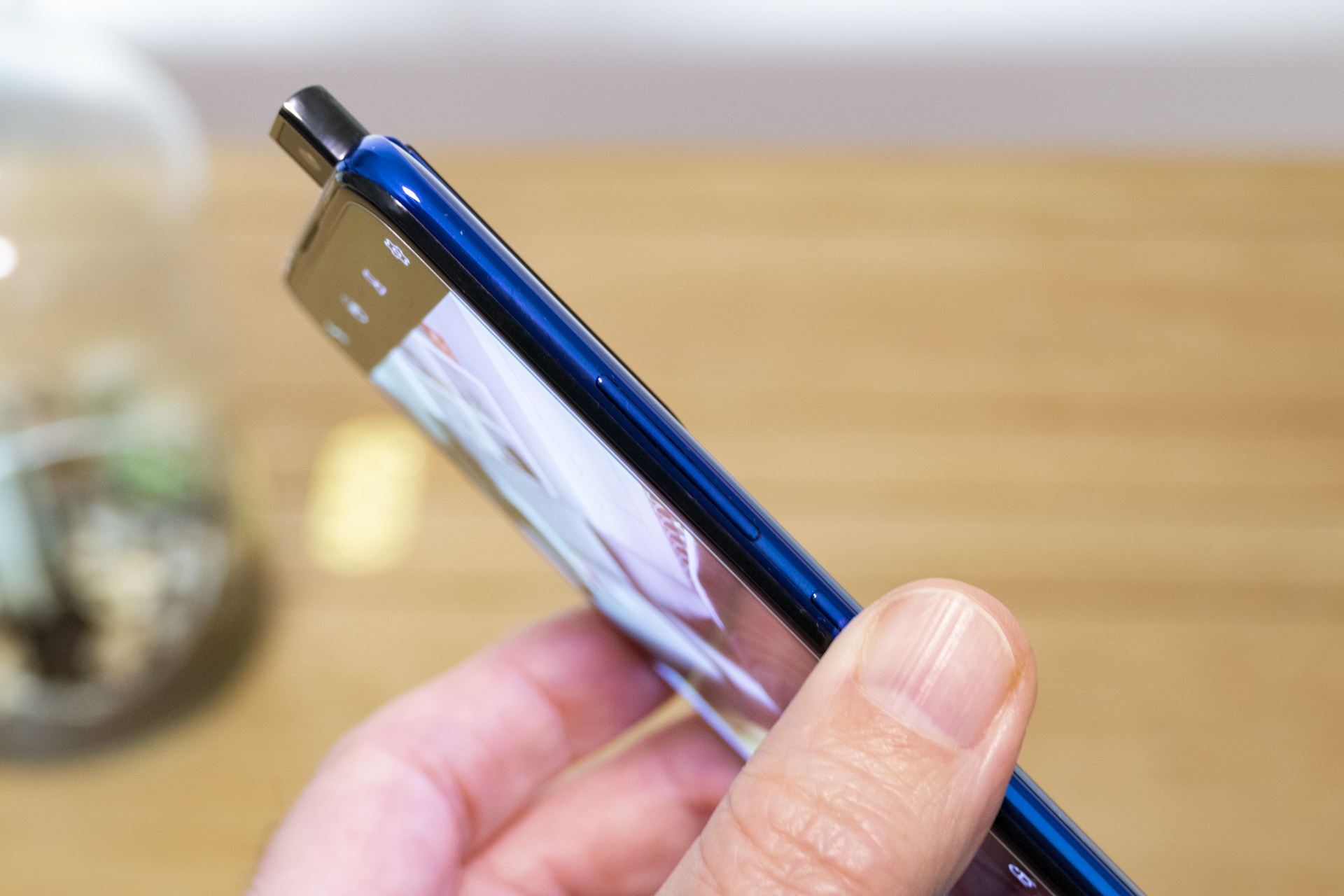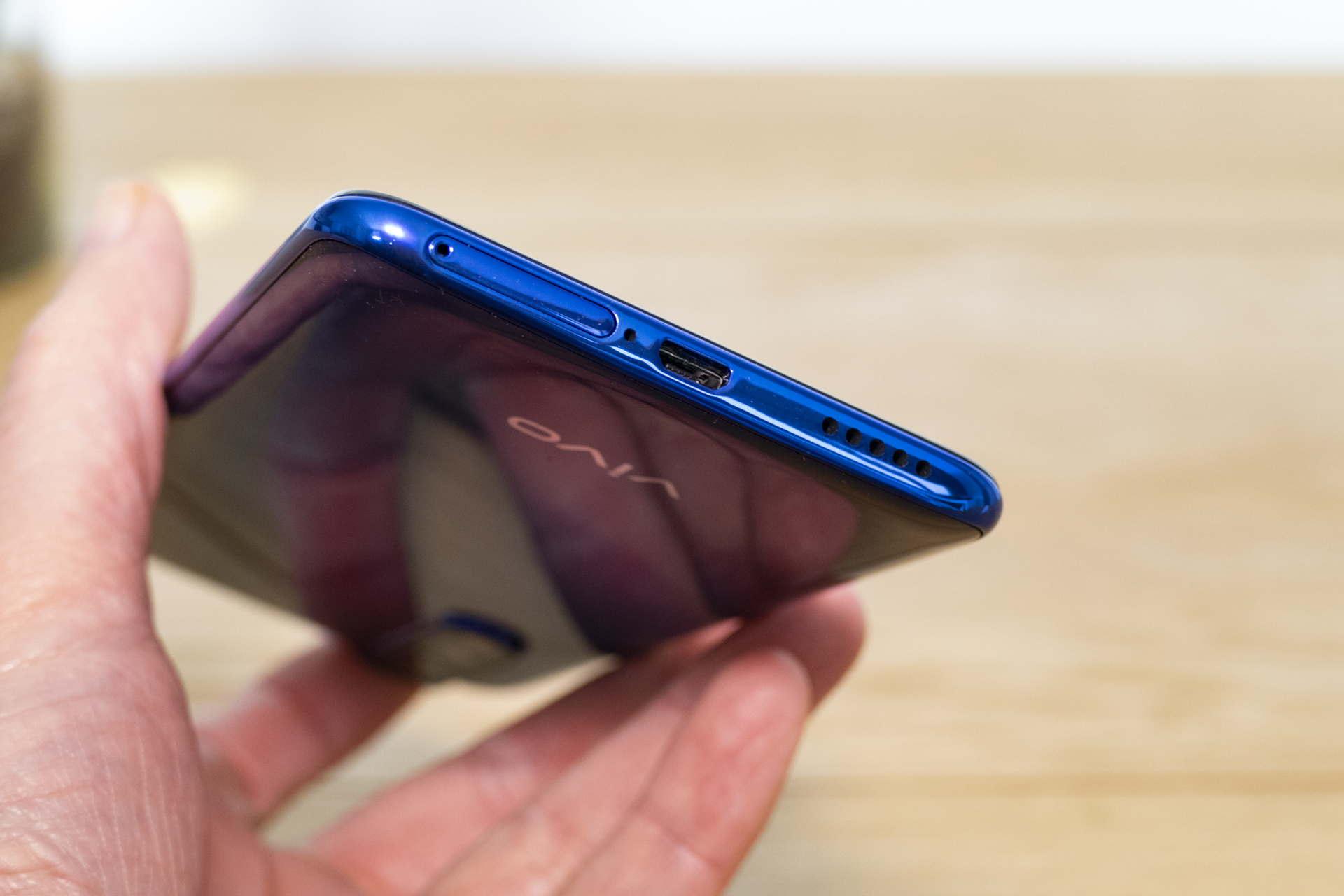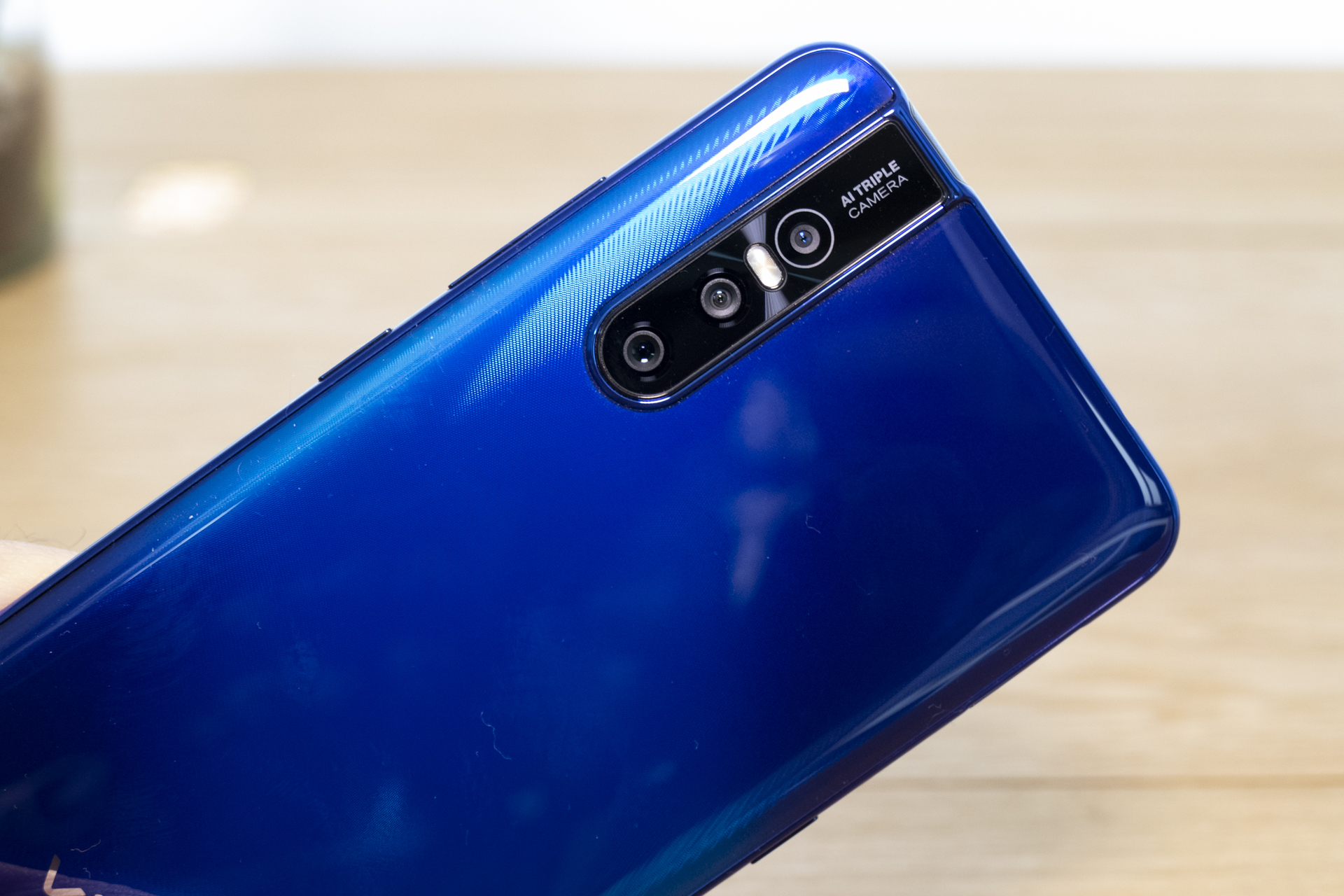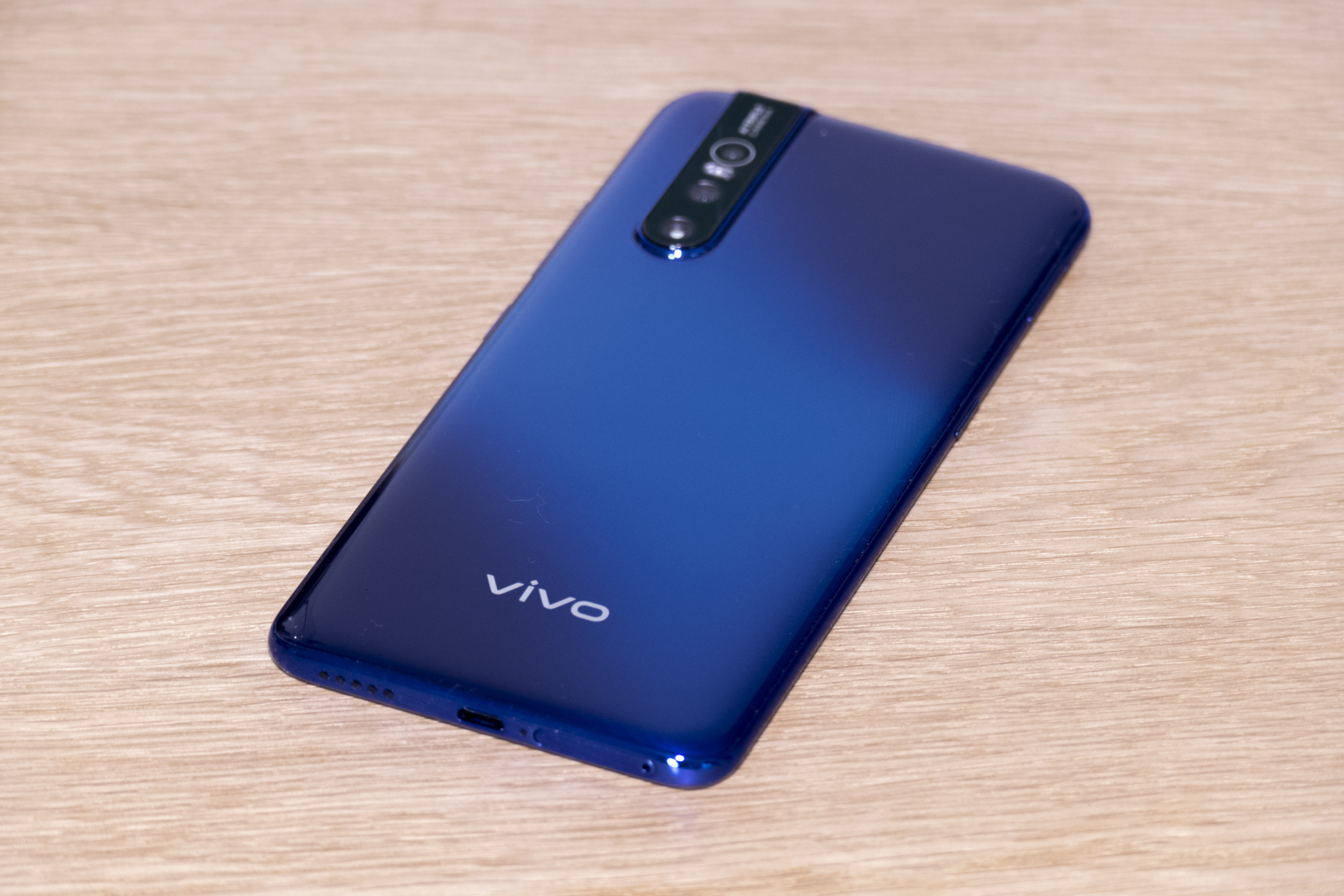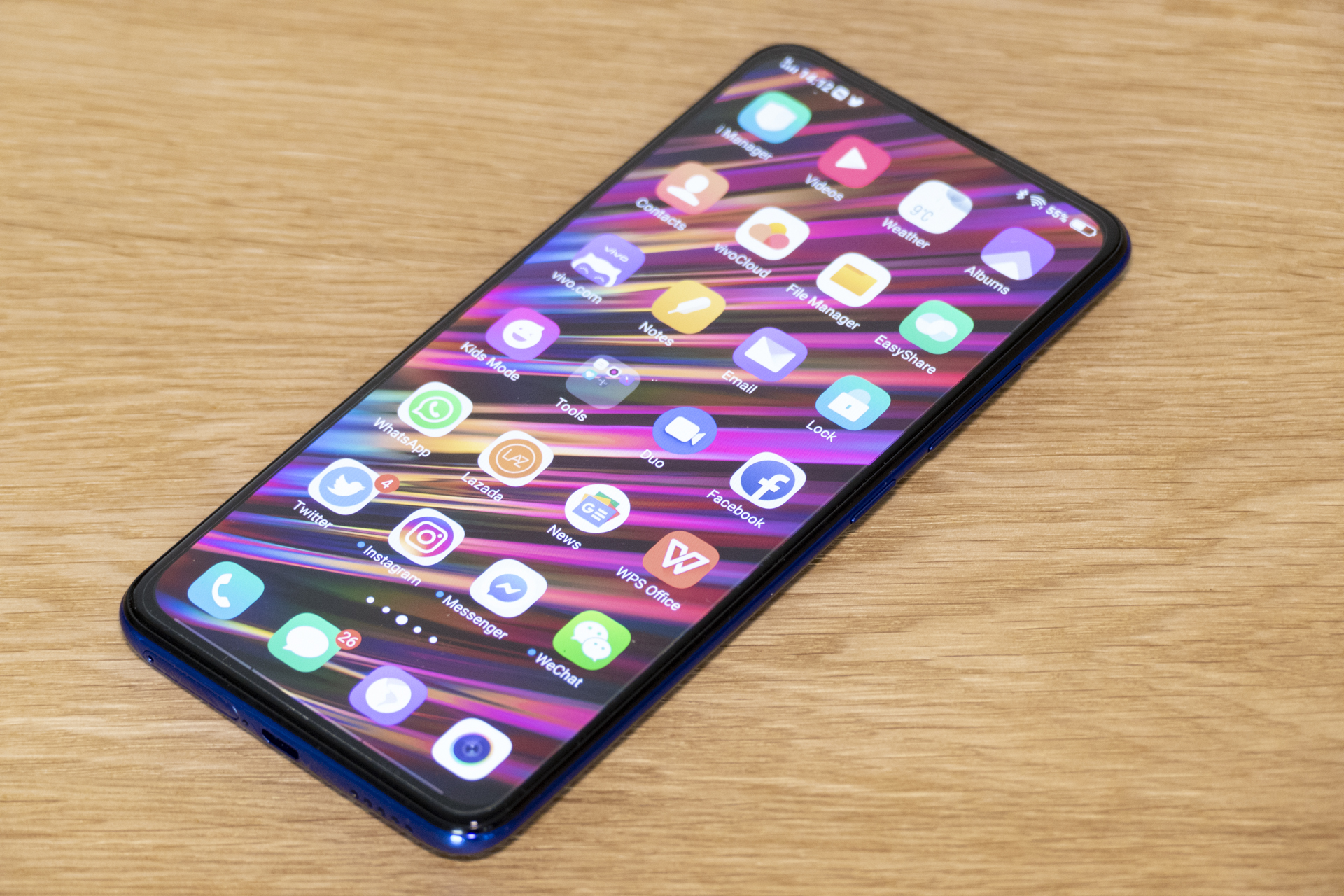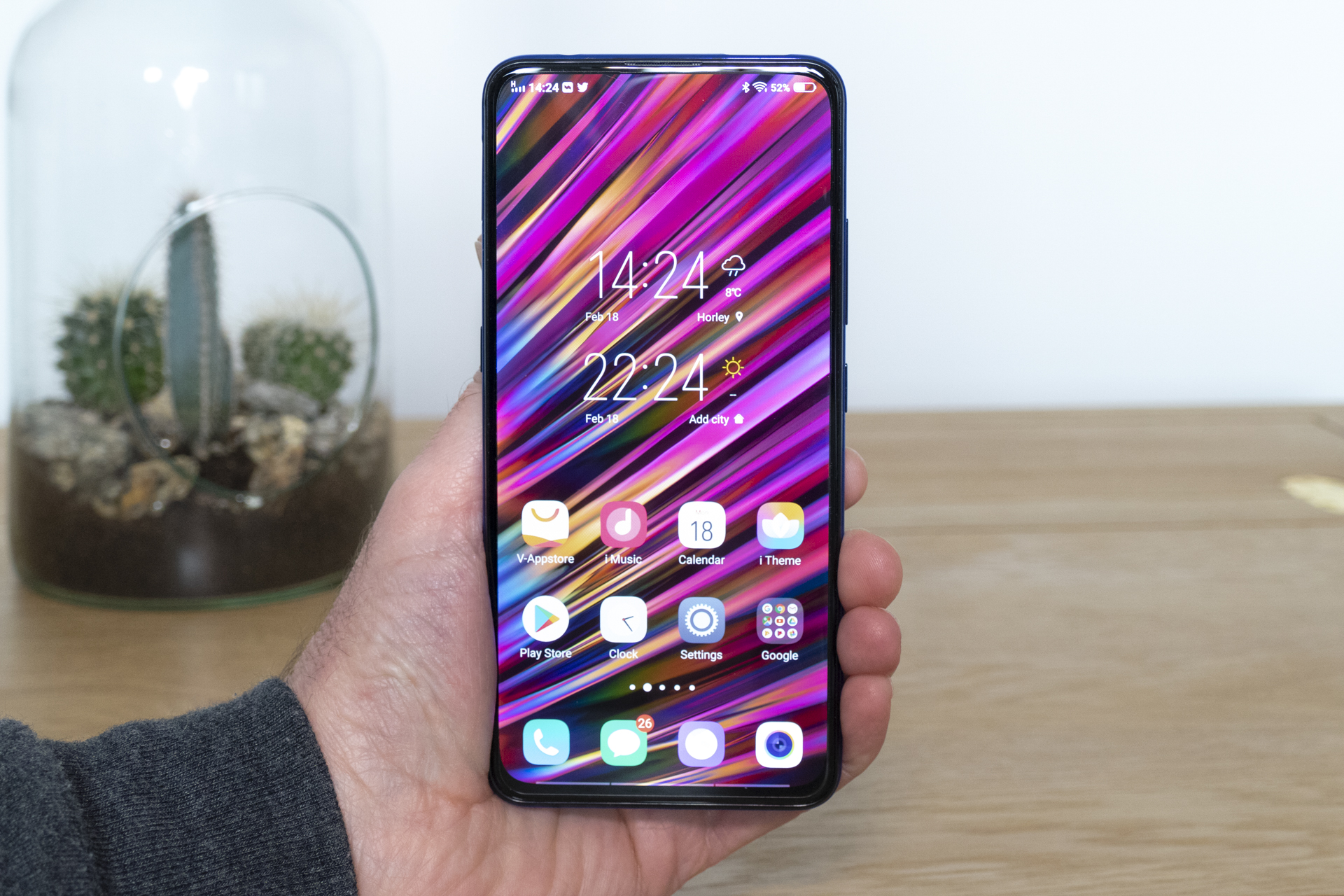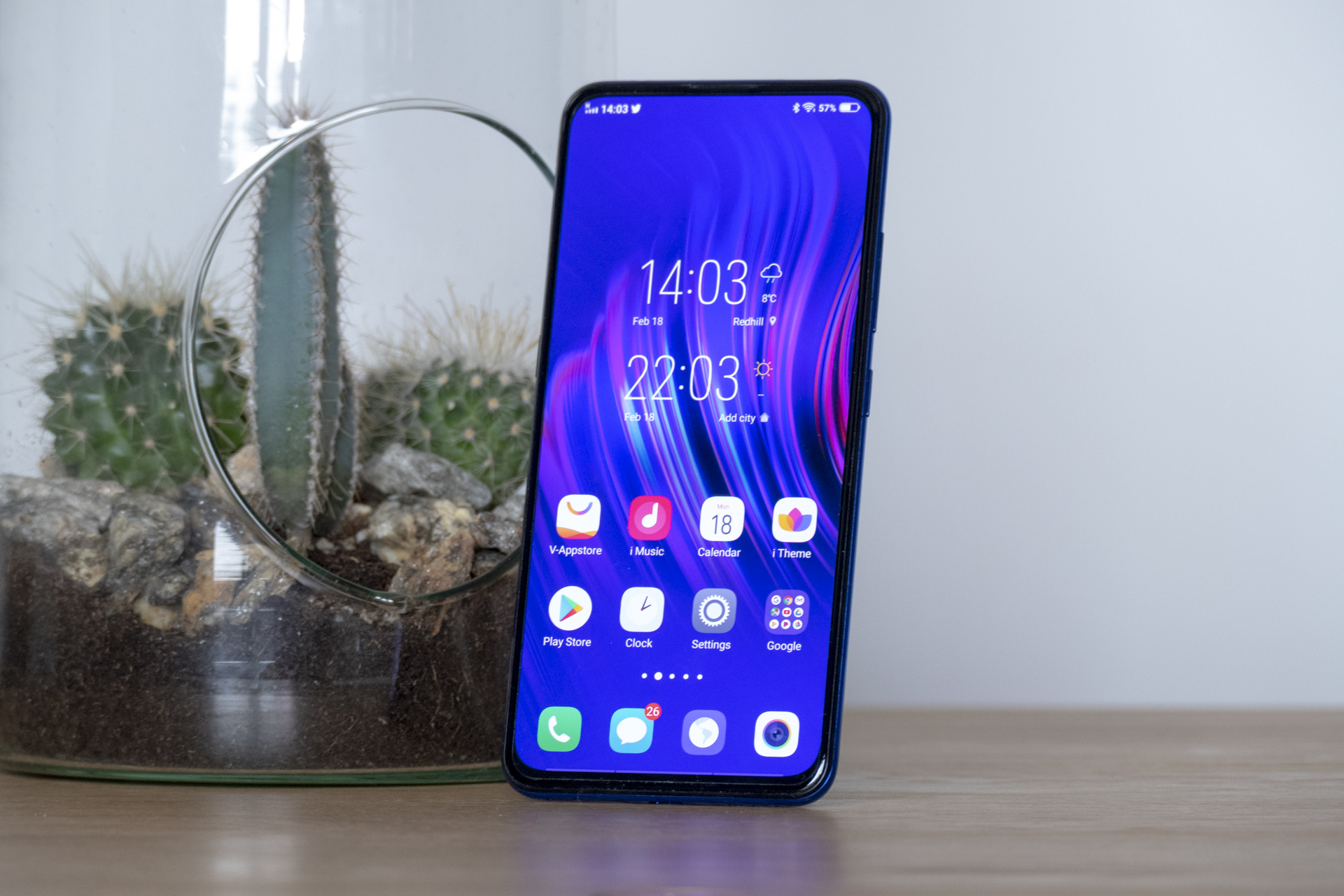Vivo was the first to come up with a motorized, pop-up camera to solve the problem of what to do with the selfie camera when the screen on a phone doesn’t have any bezels. The technology first appeared on the Vivo Apex concept phone, before arriving on the Vivo Nex S, and now, on the Vivo V15 Pro. The Nex S was filled with cutting edge tech at the time, as well as being large and quite expensive, but the V15 Pro is more mainstream, and shows how quickly brand new innovations filter down to regular smartphones today.
Front camera, security, and design
Vivo has gone all out with the front camera on the V15 Pro. It has a massive 32 megapixels, and emerges from the top right of the body. Vivo has enabled face unlock, which works alongside an in-display fingerprint sensor. We’ve used face unlock with a pop-up camera before on the Oppo Find X, but it was a feature missing from the Nex S. The camera is ready to go and the screen unlocked all in less than two seconds, and it’s activated by swiping up on the lock screen. It disappears again almost before you’ve had a chance to register it was there at all.
We’d say it’s slightly slower than face unlock on a Huawei phone like the P20 Pro, but more reliable, and about the same as face unlock on the iPhone XS, just less secure. There are no fancy 3D sensors here, just a camera. For higher levels of security you have the in-display fingerprint sensor, another area where Vivo innovated before many others. The technology is steadily improving, and in our short time with the phone, this 5th generation sensor is faster and more reliable than many others we’ve used.
Vivo has added artificial intelligence for scene recognition, portrait lighting, and an enhanced night mode.
Flip the phone over and you’re immediately struck by the bright, reflective rear panel, which has a stylish texture that reminds us of Huawei’s Hyper Optical design on the back of the Mate 20 Pro. Vivo calls it Spectrum Ripple, but here the effect doesn’t feel any different to touch, and despite doing a good impression of glass, the back of the V15 Pro is plastic. The sides of the phone giveaway its mid-range status, as the plastic buttons lack texture, and the finish on the edges feels warm and a little cheap compared to a glass or metal body.
It’s good to see some thought go into making it look as stylish as possible, disguising the phone’s mid-range position. We like the look of the V15 Pro a lot, and find it easy to hold. The V15 Pro is 8.2mm thick, and weighs 185 grams. Vivo hasn’t removed the headphone jack from the body either, but has taken the bizarre decision to use a separate slot on the body for a MicroSD card, rather than using a hybrid tray for it and a SIM card in the SIM tray.
Rear camera
A large camera bump sits on the left of the back and contains three camera lenses — the main 48-megapixel lens, an 8-megapixel ultra-wide lens, and a 5-megapixel lens for measuring depth. Vivo has added artificial intelligence for scene recognition, portrait lighting, and an artificial intelligence-enhanced night mode.
We’ve taken a selection of early photos to try it out, and are impressed with the performance. The 48-megapixel mode is activated as standard, and pictures are rich with detail. It happily adapts to light and dark lighting transitions, but did struggle slightly when the sun was peaking out behind buildings, where other cameras would have better handled the scene. It’s versatile too, with the wide-angle lens providing fun creative opportunities, and it’s not blighted by a fish-eye effect either.
Funtouch’s problem is that it reinvents aspects of Google Android without any real need to do so.
The A.I.-driven night mode is very effective, bringing out plenty of extra detail in a nighttime photo of St. Pauls Cathedral in London, crucially without losing atmosphere and making the picture look unrealistic. Overall, in the short time we’ve spent using the V15 Pro’s camera, it’s another winner from the company.
How about the motorized selfie camera? If beauty modes are your thing, then the Vivo V15 Pro will be right up your street. The list of alterations and “enhancements” is long, with everything from changing skin tone and changing the shape and size of your eyes, to thinning your face, jawline, and body.
Each setting is adjustable, and there are plenty of filters to add as well. The beauty mode is the default when you activate the front camera, but there’s a normal photo mode too, along with a portrait mode which blurs the background. This works acceptably, but still blurs out the edge of glasses if your head is at an angle.
Software
Our review Vivo V15 Pro has Android 9.0 Pie installed with the January 2019 security patch, and Vivo’s own Funtouch user interface over the top. The V15 Pro has Funtouch version 9 installed, with Google Services too, and it has improved over the version on the Nex S.
Provided you aren’t overly demanding, the V15 Pro should be a great everyday companion.
Familiar
Funtouch’s problem is that it reinvents familiar aspects of Google

We received several software updates while using the phone over a few days, which fixed various bugs we’d already discovered, but some remain. For example, the camera app sometimes crashes when going into Pro mode, and games like Reckless Racing 3 display in a strange way unless you change to full screen.
Screen and performance
The decision to fit a beautiful Super AMOLED screen to the V15 Pro is a good one. It’s colorful, bright, and has excellent contrast levels when we watched YouTube videos and photos from the Gallery app. A Snapdragon 675 processor with 8GB of RAM powers the phone we’ve been using, but the specs will vary depending on where you buy the phone. We played a few games, used social networking apps, and generally set the phone up without any problems.
The V15 Pro is a great example of why we continue to like Vivo’s smartphones
Provided you aren’t overly demanding, the V15 Pro should be a great everyday companion, particularly with the 3,700mAh battery inside. We haven’t used it long enough to establish standby and use times yet though, but we’re disappointed by a MicroUSB charging port rather than a USB Type-C. There is fast charging, but it’s basic, with 25-percent charge coming in 15 minutes.
Price and availability
You’ll have to import a V15 Pro if you live in the U.S. or the U.K., although Vivo says it will launch internationally over the coming months, starting with India. At the time of writing the price has not been announced.
Because the Vivo V15 Pro is not made for the U.K. or the U.S., when using a SIM card for the O2 network in the U.K., it connected only at 3G/HSPDA+ speeds. Worth noting if you’re thinking of importing one and want 4G LTE.
Conclusion
It’s impossible to ignore the novelty of watching — and hearing, as there are various cool sound effects to go with it — the camera rise from the phone’s body. It’s definitely a standout feature on the Vivo V15 Pro, but we’re pleased it’s not the only reason you’d want to buy one. The colors are striking, the screen is a beauty, and the camera impresses whether it’s on the front or the back of the phone.
The V15 Pro is a great example of why we continue to like Vivo’s smartphones — it is willing to experiment with cool technology and unusual designs, whether it’s a mainstream phone like this, or a concept like the Apex 2019. We just want the software to reach the same standard as hardware.

